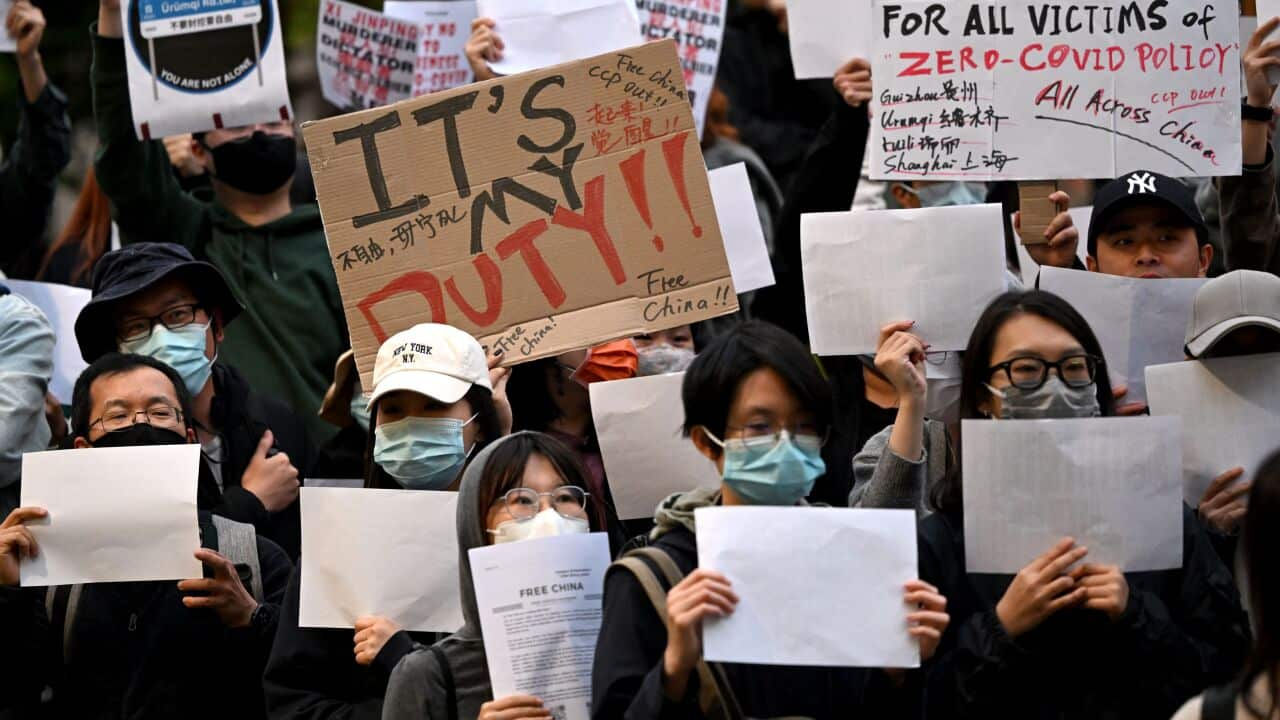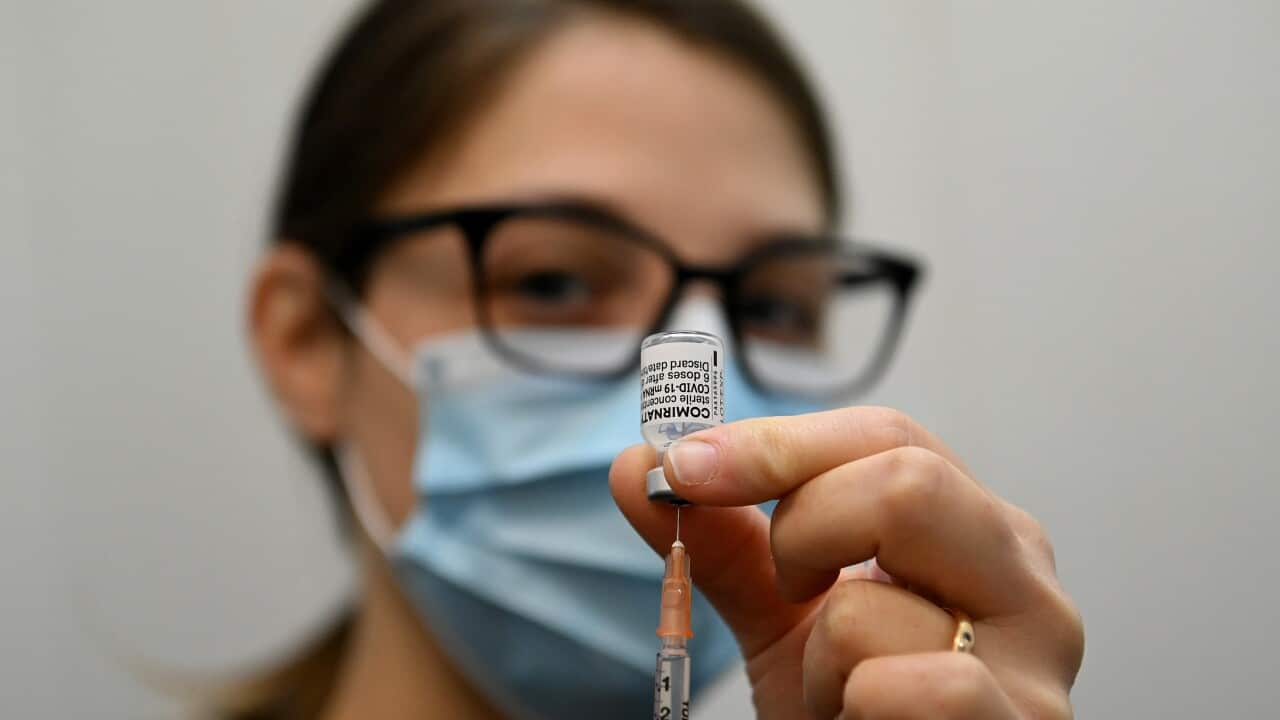For the past three years, China has enforced strict zero-COVID policies, which have resulted in ongoing lockdowns, a struggling economy, and last month fuelled
Here's what we know, and what it could mean for both China and the rest of the world.
What do we know about China's plans to ease restrictions?
China may announce 10 new COVID-19 easing measures as early as Wednesday, two sources told news agency Reuters.
The sources said the management of the disease could be downgraded from the top-level Category A to the less strict Category B as soon as January.
Category A covers diseases such as bubonic plague and cholera, while Category B includes SARS, AIDS and anthrax.
Last week, Vice Premier Sun Chunlan said China was facing "a new situation" as the ability of the Omicron virus to cause disease weakened. She became the first high-ranking Chinese official to publicly acknowledge Omicron's reduced effects.
"The most difficult period has passed," the official Xinhua news agency said in a commentary on Monday, citing the weakening pathogenicity of the virus and efforts to vaccinate 90 per cent of the population.
In November, China unveiled 20 steps to start easing restrictions nationwide.
Many major cities started to lift lockdowns and reduce regular PCR testing. Officials stopped asking people in public places to prove they had tested negative to COVID-19.
Now, under the extra measures set to be announced, China will allow home quarantine for some of those who tested positive, two sources told Reuters last week.
Entire communities had been locked down even if just one person tested positive.
Residents of China's capital were allowed into parks, supermarkets, offices and airports without a negative COVID-19 test on Tuesday, the latest in a mix of easing steps nationwide after unprecedented protests against a tough zero-COVID policy. There was no indication of a change to the rule for a negative test before boarding a flight.
"Beijing readies itself for life again," read a headline in the government-owned China Daily newspaper, adding that people were "gradually embracing" newfound freedoms.
Many hope the moves are a shift towards normalcy three years into the pandemic.
"This might be the first step towards reopening," Hu Dongxu, 27, told Reuters as he swiped his travel card to enter a train station in Beijing, which has also dropped the need for tests to use the subway.
As they waited for news, some people, wary the virus might now spread faster, rushed to buy COVID-19 antigen kits and fever medicine and market regulators issued warnings against hoarding and hiking prices.
The loosening of the rules comes after a string of protests last month that marked the biggest show of public discontent in mainland China since President Xi Jinping took power in 2012.
While rallies have subsided, throngs of students at a university in Nanjing city chanted at a protest on Monday against COVID-19 policy on their campus, according to videos on Twitter. Reuters confirmed that the footage was taken at Nanjing Tech University.
How are people responding to the prospect of an end to zero-COVID?
The prospect of a relaxation has sparked optimism among investors that the world's second biggest economy would regather strength and help to boost global growth.
The Chinese yuan has risen about 5 per cent against the US dollar since early November on expectation of an eventual reopening of China's economy.
Screenshots of an article criticising China's the zero-COVID policy published by a health supervision body in Henan province were widely shared on social media on Tuesday, after it was censored following its publication.
The article posted on the WeChat page of the Zhumadian city health commission, criticised some "devastating" impacts caused by the policy and its sometimes "brutal" implementation.
But on the ground, many people have been slow to adapt to the changing rules. Commuter traffic in major cities such as Beijing and Chongqing has remained a fraction of normal levels.

People line up for COVID-19 tests in a residential community under lockdown in Shanghai, China on16 April 2022. Source: AAP / ALEX PLAVEVSKI/EPA
"My parents are still very cautious," said James Liu, 22, a student in Shenzhen city in the southern province of Guangdong, where authorities dropped testing requirements to get into the family's residential compound.
Meanwhile, officials continue to play down the dangers posed by the virus, bringing China closer to what other countries have been saying for more than a year as they dropped restrictions and opted to live with the virus, even as it spread.
Analysts predict China may reopen the economy and drop border controls sooner than expected next year, with some seeing it fully open in spring.
But more than half of Chinese say they will put off abroad even if borders reopen now, according to a survey of 4,000 consumers by consultancy Oliver Wyman.
But for all those wary of returning to normality, there are others clamouring for more freedoms.
"Let's implement these policies quickly," a Beijing-based lawyer surnamed Li wrote on WeChat, reacting to the dropping of testing requirements.
"Our lives and work have been affected for so long."
What are China's case numbers, and how much could they increase?
On Friday, China reported 5,233 COVID-related deaths and 331,952 cases with symptoms.
Over the course of the pandemic, it has reported 9,773,628 cumulative cases and 30,525 cumulative deaths, according to the World Health Organisation.
Some experts have warned the death toll could rise above one million if the exit to zero-COVID is too hasty.
Associate Professor Paul Griffin, an infectious diseases physician and clinical microbiologist with the University of Queensland, said these numbers are almost certain to rise as restrictions are eased.

A health worker walks past quarantined houses in Shanghai, China on 19 March 2022. Credit: AAP
"I think absolutely when those harsher restrictions are relaxed that case numbers will increase, but with the civil unrest and the protests that we're seeing, a lot of that is already going to drive an increase in cases, so it's hard to know exactly the impact that relaxing the restrictions will have," he said.
"I would also hope there's going to be some measures and messaging that will minimise the impact of the changes of restrictions; encouraging people to get tests and addressing the vaccine uptake ... those sorts of things will hopefully minimise the impact of the change in some of these restrictions."
Zhou Jiatong, head of the Center for Disease Control in the southwestern Guangxi region, predicted more than two million people in mainland China may die if the country loosens COVID-19 curbs in the same way Hong Kong did this year.
In a paper published by the Shanghai Journal of Preventive Medicine last month, he forecast infections could rise to more than 233 million.
On Monday, British scientific information and analytics company Airfinity said if China lifts its zero-COVID policy, low vaccination and booster rates in the community meant between 1.3 million and 2.1 million people could die.
The company said it modelled its data on Hong Kong's BA.1 wave in February, which swept the city after it eased restrictions after two years.
Will vaccinations help?
Professor Griffin said while China’s exact rates of vaccination are not clear, they do appear to be lower than those in countries such as Australia.
He told SBS News this could lead to an increased vulnerability to high rates of transmission as restrictions ease.
China has not approved foreign vaccines and has instead opted to develop and produce its own Sinovac and Sinopharm vaccines.
"They've relied on a vaccine that doesn't appear to have the same levels of efficacy that some of the other vaccines have," he told SBS News.
"While we're still not completely clear on exactly what their rates of vaccination are, it does appear that they haven't achieved the same levels as some countries such as our own, and that will mean they're relatively vulnerable when case numbers do climb and when we see rampant community transmission take off."
What about the economic impacts?
The COVID-19 pandemic has had a significant impact on China's economic performance and global supply chains over the past three years.
Yixiao Zhou, senior lecturer of economics at the Australian National University, said China had initially maintained positive growth throughout global lockdowns but slowed in the past year.
"COVID hit a lot of economies very hard, but in 2020 China actually maintained positive growth," she said.
"In 2021 globally many economies recovered and there was strong recovery ... but for China in 2022, it still had stronger COVID-19 restrictions that other economies, so part of the reason it experienced more slowdown was because of the restrictions still in place."
Dr Zhou said growth in 2022 was expected to be lower than what was forecast at the start of the year.
"Now it's the end of 2022 and the expected growth rate is around 3 per cent for the year, but at the beginning it was expected to be around 5 per cent," she said.
"I think with COVID restrictions eased, it will help boost that rate in 2023, and boost export performance and FDI (foreign direct investment)."
Dr Zhou said opening the borders could also help ease supply chain pressures in the global economy.
"If China's supply capacity is increased that could benefit the global supply chain and benefit other economies because it could lower prices and help reduce inflation pressure," she said.
"When the international border is reopened and quarantine time reduced, that will be a big boost to economic growth because with more international travel, people can more easily do business and people can go in and out more easily."






